Companion Planting For Chamomile: 9 Plants [2023]
If you’ve been planting chamomile for a while now and thinking of companion planting chamomile to maximize your plant yield and grow some mutually-beneficial plants?
Look no further because you’re in the right place!
In this article, I’ll share with you what to plant with chamomile to help your chamomile plant grow better.
There are quite a few companion plants for chamomile, but there are also bad companion plants for chamomile.
It’s important you know which is which in your journey of chamomile companion planting so that you don’t risk jeopardizing the health of your plant.
If you’re pressed for time, here are 9 of the best plants to consider when companion planting chamomile:
1. Lavender
2. Basil
3. Fruit Trees
4. Peppers
5. Potatoes
6. Cucumber
7. Alliums
8. Brassicas
9. Roses

Affiliate Link Disclosure
Some of the links here are affiliate links, and I may earn if you click on them, AT NO EXTRA cost to you. I hope you find the information here useful! Thanks!
Related Posts
- 23 Companion Plants For Thyme To Help It THRIVE! [2023]
- 27 Companion Plants For Mint To Thrive (And Avoid!)
- Companion Plants For Leeks: 17 Plants That Will Boost Growth
Companion Planting Chamomile: 9 Companion Plants Worth Growing
Chamomile is well known for its anti-inflammatory properties.
It is used as an antioxidant, and also for its digestive benefits. It also benefits other plants when planted together as a companion plant, and vice versa.
Here are nine plants that could benefit your chamomile plant when planted as a companion plant:
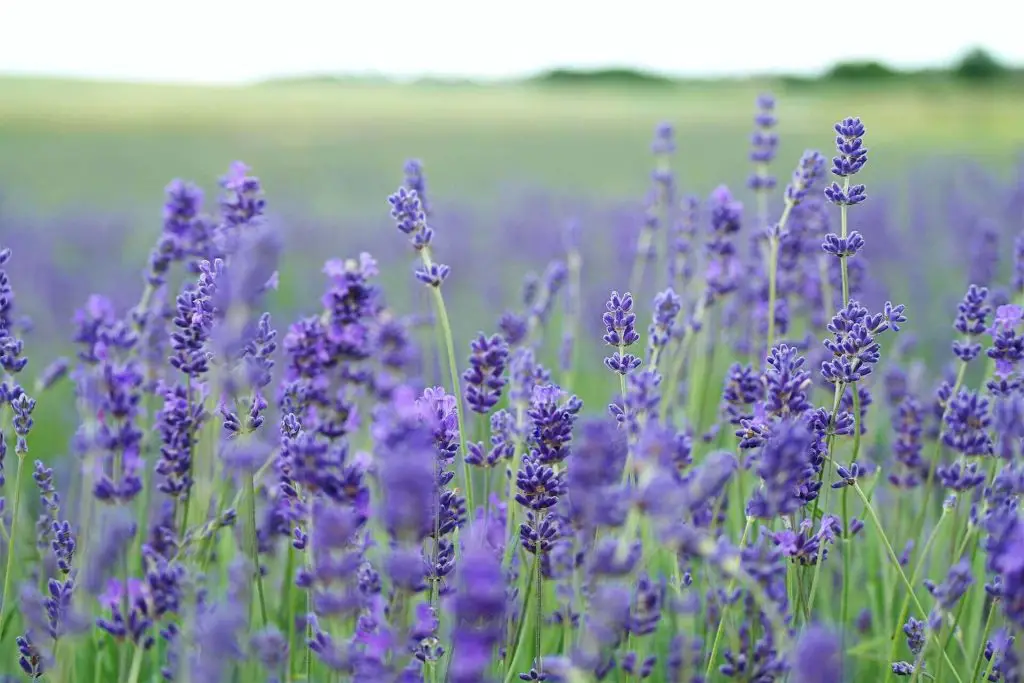
1. Lavender
Lavender is a great companion plant for your chamomile as both plants grow synergistically.
However, it is worth noting that while both plants can be planted as companion plants, they should be in separate containers as chamomile plants favor moist soil, whereas lavender plants like dry soil.
Both, when grown together, are a sight to behold with their purple hues and yellow tones, and their scents will also spruce up your garden’s aroma, and keep pests at bay.
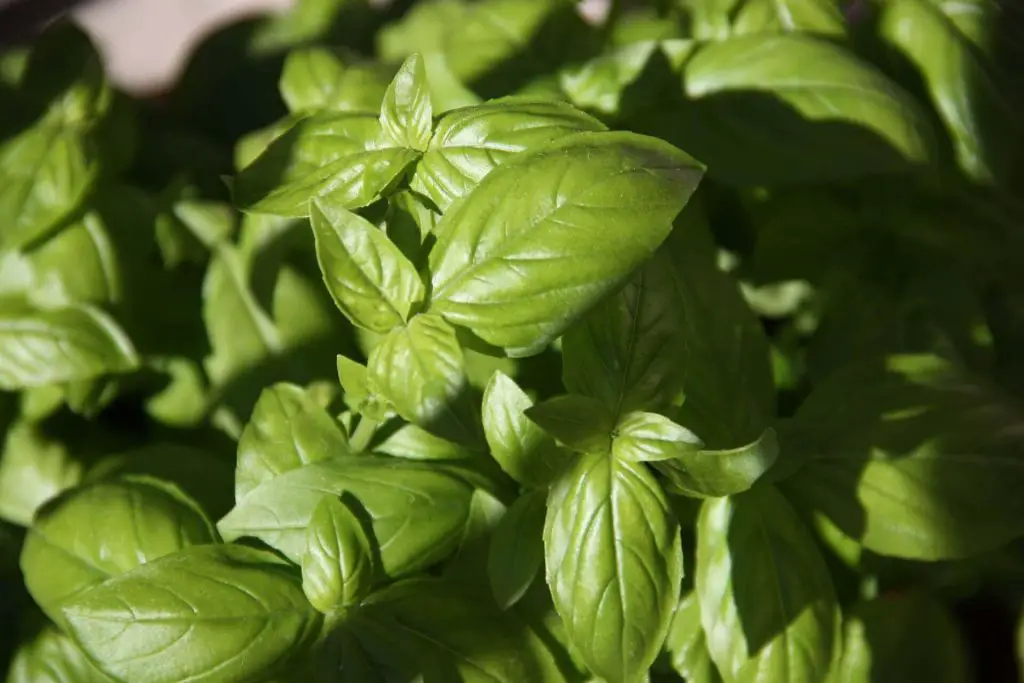
2. Basil
While basil doesn’t enhance the yield of chamomile per se, it is a great companion to any chamomile plant because a chamomile plant would help increase the essential oil yield of a basil plant.

3. Fruit Trees
Growing chamomile with fruit plants and trees like strawberries will help attract beneficial insects to help pollinate your plants and produce a good yield.
Farmers also love planting chamomile near fruit trees because of its antifungal and antibacterial properties.
Chamomile and strawberry companion plants have been said to be an excellent pairing, increasing the yield of strawberries and even enhancing the taste of these red rubies!
You’d have to grow and taste them for yourself to know just how good this combination tastes!
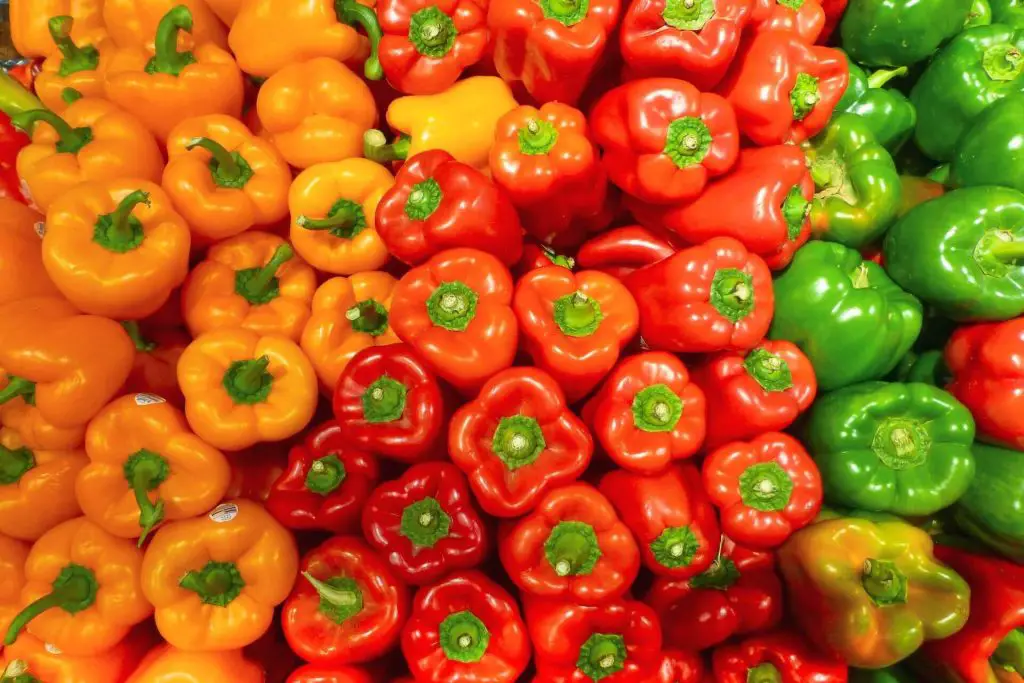
4. Peppers
Combining chamomile and peppers as companion plants is beneficial for the pepper plant as chamomile will attract beneficial pollinators like bees and wasps.
A chamomile plant also has anti-fungal properties, so for solanum plants that have a higher propensity for blight and fungal diseases, chamomile is a great complement in preventing a nasty fungal infection.

5. Potatoes
Another solanum plant that is great as a plant for companion planting with chamomile is the potato plant. Potatoes have a high likelihood of fungal infections due to low to poor air circulation and wet leaves.
By planting it alongside a chamomile plant, you help deter fungal infections right from the get-go.
Potato plants are also highly susceptible to pests like the colorado beetle, and by planting them next to a chamomile plant, you repel such pests while enjoying the fragrance of the plant!

6. Cucumber
When you plant cucumbers near your chamomile plant, your cucumber will experience faster growth and taste a lot better as chamomile releases chemicals that encourage these characteristics.
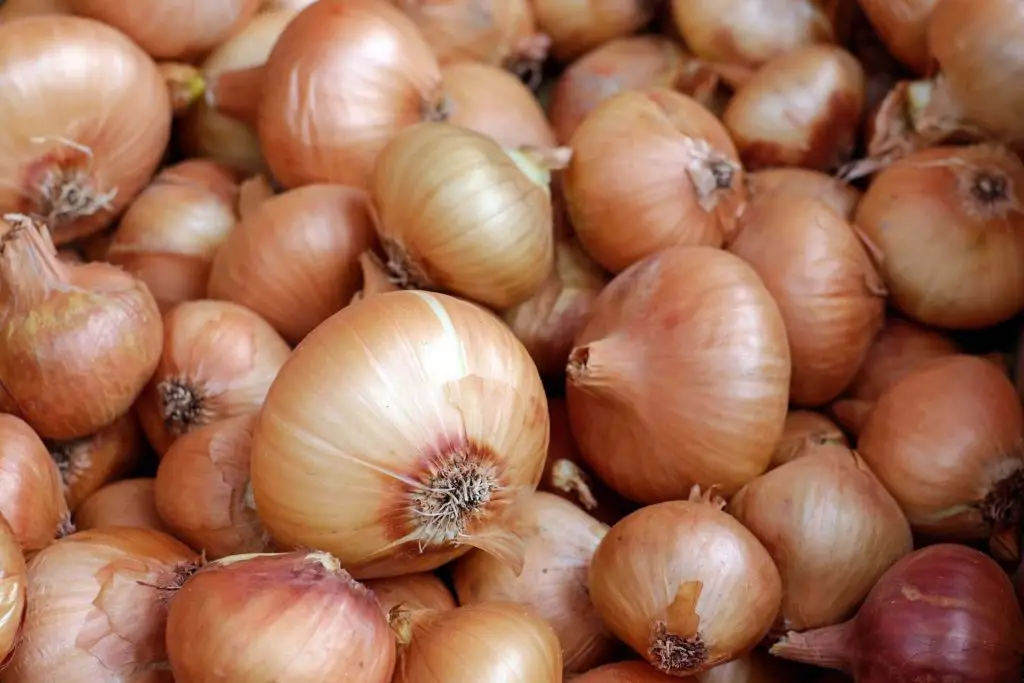
7. Alliums
If you’ve been thinking of growing alliums, chamomiles are a great companion plant to alliums like onions, garlic, and chives.
Growing chamomile with alliums is a fuss-free way where you can fix the nitrogen levels in the soil, attract insects that are beneficial for alliums, and also have the allium enjoy the partial shade provided by the chamomile plant.
You should however take note that a chamomile plant has shorter roots than allium plants, so there is a likelihood that soddening may occur. But even if it does, there is no effect on any of the plants’ nutrient levels.

8. Brassicas
Brassicas refer to plants like broccoli, cauliflower, brussel sprouts, cabbage, turnips, collard greens, and kale among others. These plants are well-known for their antioxidants and are a welcome addition to almost any garden.
When you plant chamomile as a companion plant alongside brassicas, the chamomile plant helps to attract good insects like ladybirds and wasps which prey on pests that flock to brassicas.
As I shared earlier, the anti-fungal property of chamomile plants is also very much welcome by brassicas as they can be prone to mildew and fungal infections that might affect yield.

9. Roses
Roses are red, chamomiles are white, and when you plant them together it can be a real delight.
Roses are a sight to behold with their soft, lush petals and when planted together with chamomile, not only will enhance the beauty of your garden, but also spruce up its fragrance.
To add, the chamomile plant has amazing pest-control properties, so you can be sure that pests will steer clear of your beautiful roses should you plant it alongside your chamomile plant.
Benefits Of Companion Planting Chamomile
Companion planting chamomile has many benefits whether it’s to the chamomile itself or the other plant. These are just some of the many benefits:
- The companion plant can repel predatory insects
- It can also attract mutually-beneficial insects like pollinators
- It helps your plant grow better
- The plants and their fruits taste better due to chemicals released by the companion plant
- Nutrients in the soil like nitrogen get replenished
- Companion plants can provide shade and ground cover
- They could also serve as delineating markers especially if you’re growing companion plants of different growing speeds.
If you’d like to start companion planting but find it too confusing to remember which plants pair well with which, you can refer to a companion planting chart printable, which you could print and paste into your garden shed for easy reference!
Types Of Chamomile
There are many different types of chamomile such as Roman chamomile, German chamomile, Egyptian chamomile, Moroccan chamomile, yellow chamomile, and wild chamomile.
When you have your chamomile teas, the chamomile found in the teas is usually German chamomile and Roman chamomile. Both plants are very resilient and can be found everywhere though they are native to Europe and Asia.
While both plants are used for tea and are similar in appearance, scent, and the oils they produce, they have several key differences.
German chamomile is an annual, self-seeding plant that grows up to 3 feet high, and is suitable for growing indoors. In contrast, Roman chamomile is a perennial plant that is low-growing and is not suitable for indoor gardens.
How To Plant Chamomile
Planting chamomile is straightforward but several steps need to be followed if you want healthy flowers. Here are the steps on how to plant chamomile:
1. Sow chamomile seeds onto the surface of good potting soil and top it off with some vermiculite which helps the soil breathe while keeping water and nutrients in. You can place the pot in a heated propagator for germination.
2. Once the seedlings grow big enough, you can move them into their pots. The pots should be placed somewhere with sufficient sunlight.
3. If you’re growing them on a lawn, then make sure the plants are at least 4 inches apart.
4. Your chamomile plant should be watered regularly and also trimmed to prevent it from being too leggy and scraggly. The chamomile plant should look compact and dense.
5. The plants are ready to be harvested when the flowers are nice and open, and the petals start to droop backward. This happens typically about three to four months after you first plant the seeds. Harvesting your chamomile plant regularly will help encourage more flowers.
6. Once you’ve harvested your chamomile flowers, you can immediately make some hot, piping chamomile tea with it, or dry it for use later. To dry your chamomile flowers, put them on a tray in a warm and dry environment for one to two weeks.
After it is dried, you can store the dried flowers in an airtight container to store.
Chamomile Care And Maintenance
To ensure the best growth and yield of your chamomile plant, you can adopt these best practices:
- Water your chamomile plant an inch of water a week when it is still young. Once it grows bigger, you can let it dry out a bit more, unless the environment is extremely dry. Use your finger to check if the soil is moist to know when to water it!
- Space your plants 8 to 12 inches apart if you want your plants to grow well and receive good circulation.
- Use a light potting mix that promotes good drainage.
- Ensure your plant has good support as chamomile can get a little heavy as time goes by.
- When harvesting, make sure you cut away no more than one-third of the plant so that the plant can continue to bloom again.
Where Should I Plant Chamomile
In general, chamomile plants should be planted in an environment that is partially shaded. But if the full sun is unavoidable, that’s fine too.
You should also ensure it is grown in a place where the soil can be well-drained.
Technically, once your chamomile plant is older and more well-established, you needn’t fuss too much over your plant. It is also not too affected by many pests because of its amazing scent.
How To Harvest Chamomile
You know your chamomile plant is ready for harvest when the petals droop backward.
The best time to harvest them is midday on a good sunny day as the flowers are most open during this time, and the essential oil levels in the plant are highest too then.
You can harvest a chamomile plant by cutting it at the stem right below the flowerhead. You can harvest a chamomile plant at any time, but just make sure you keep at least a third of the plant when harvesting to ensure it flowers again within the season.
Storing And Preserving Chamomile
If you are not going to use your chamomile flowers right after harvesting them, the best way to store them would be to dry them by placing them in a single layer on a tray in a warm and dry place, out of the sun.
After one to two weeks, your flowers should be all dried to the point they seem brittle.
After that, store them in an airtight sealed container in a cool and dark place.
Assuming you keep to the conditions mentioned above, you should be able to keep your dried chamomile flowers for up to a year.
FAQs On Companion Planting For Chamomile
What Not To Plant With Chamomile
Wondering what not to plant with chamomile? Mint should not be planted with chamomile.
While both plants have amazing scents, planting chamomile with mint will prevent mint plants from producing the oil that gives the plant its fresh scent.
What Does Chamomile Pair Well With?
So, what does chamomile pair well with? Chamomile pairs well with basil as it improves the taste and scent of the basil plant and vice versa.
It’s important to ensure that when growing your chamomile and basil, to keep both plants regularly trimmed so they stay healthy and do not get too scraggly.
Can You Plant Chamomile And Lavender Together?
Can you plant chamomile and lavender together? Yes, you can plant chamomile and lavender together. Chamomile helps the growth of herbs like lavender and rosemary and may even enhance its flavor, along with its growth.
Can Rosemary And Chamomile Be Planted Together?
Can rosemary and camomile be planted together? Absolutely, rosemary and chamomile can be planted together and chamomile is a great companion plant to herbs like rosemary, basil, and mint.
It helps increase the oil production in these plants, making their scents stronger and their tastes more flavourful.
Is Chamomile Good For Tomatoes?
Wondering if chamomile is good for tomatoes? Chamomile is really good for plants like tomatoes that are prone to blight as it has antifungal properties which help keep blight at bay.
Tomatoes, potatoes tend to suffer from blight and fungal diseases so by keeping chamomile close by, you help these plants by conferring their anti-fungal properties.
Companion planting chamomile can bring about many benefits for your chamomile plant and the other plants you’re planting it with, in your garden.
The best part about companion planting with your chamomile plant is also that when you look at your garden, you can see a wonderful mix of colors standing out against the white and yellow of chamomile flowers.
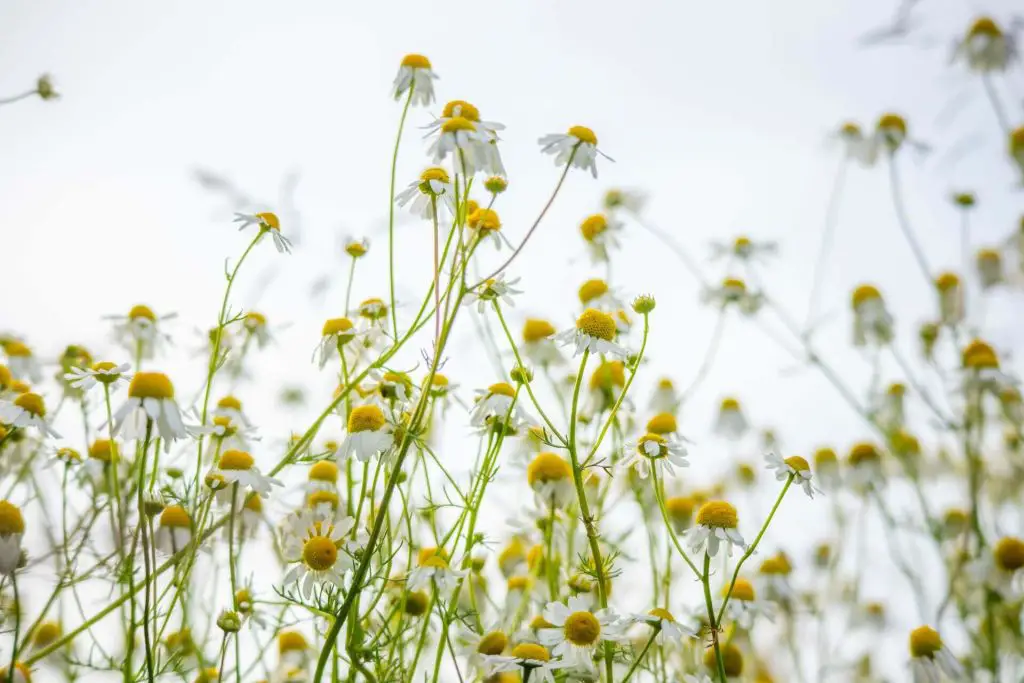
I find the act of gardening very relaxing but you know what’s also great about gardening? You get to relax even more when you make an amazing brew with your freshly-grown herbs. I love my chamomile tea with a smidge of honey and some peppermint.
How do you like yours, and what companion plants did you decide to grow your chamomile plant with? Tell me in the comments, I’m keen to know!
Happy gardening!
Related Posts





![How To Trim Basil Plant Without Killing It & What To Avoid! [2023]](https://aboveandbeyondgardening.com/wp-content/uploads/2022/10/how-to-trim-basil-plant-without-killing-it-768x513.jpg)
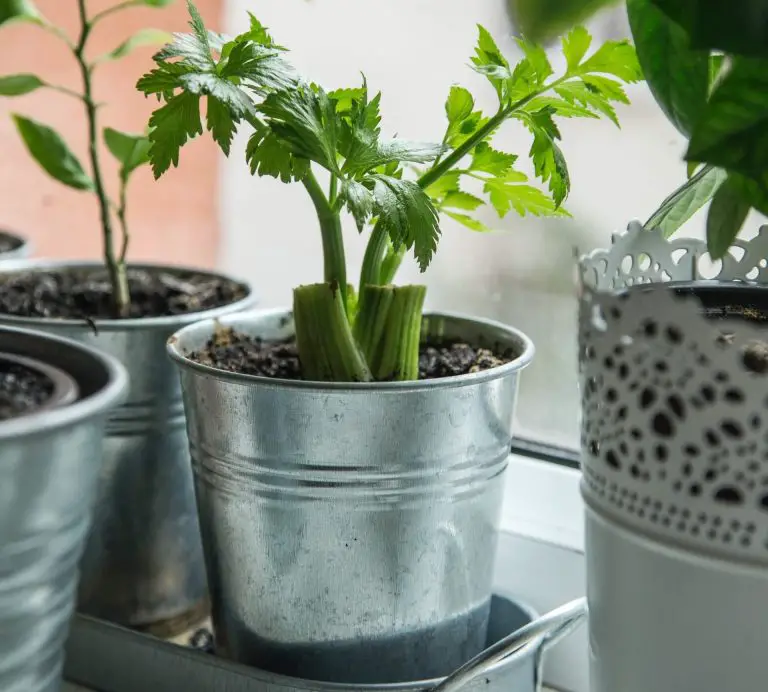

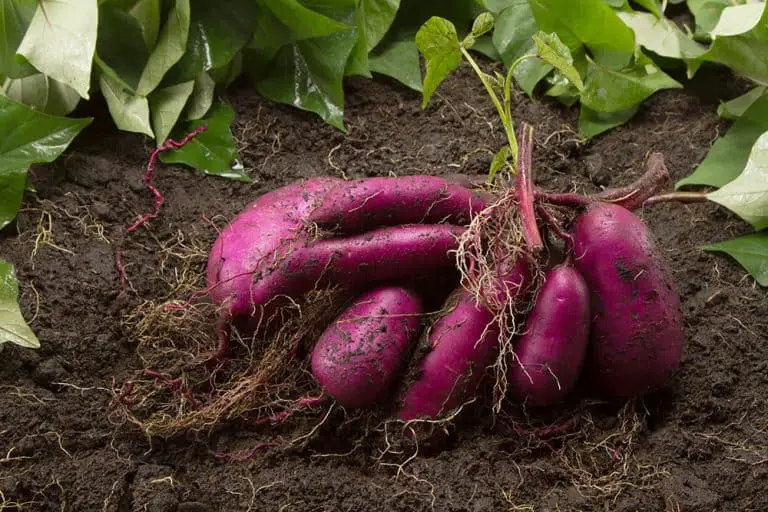
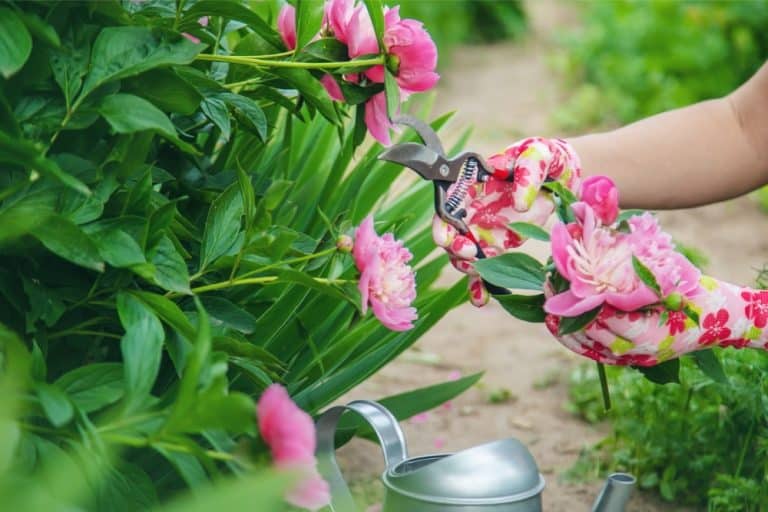
![How To Harvest Parsley Without Killing The Plant -Exact Steps! [2023]](https://aboveandbeyondgardening.com/wp-content/uploads/2022/10/how-to-harvest-parsley-without-killing-the-plant-768x512.jpg)